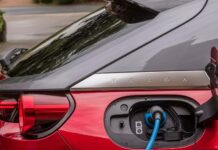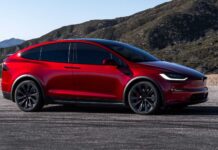[ad_1]

First, the good news for all of the manufacturers, auto dealers, utilities, and state and federal legislators who’ve staked their futures on electric vehicles (EVs): incentives work and adoption rates are rising nationwide. According to the latest data from the J.D. Power EV Index, EVs now account for 8.6 percent of the total new-vehicle purchase and lease market, driven in large part by new incentives that have made EVs more affordable.
In fact, by analyzing patterns of EV consumer behavior during the past year, we’ve found a clear correlation between states with the biggest government incentives and the highest consumer EV adoption rates. In California, for example, which currently has the highest EV adoption rate in the nation, consumers are eligible for state EV tax credits of $2,000 on cars and $4,000 on trucks. We see similar trends in Colorado, New York, and New Jersey where state-level EV incentives have had a significant influence on adoption.
EV Shoppers Confused About Incentives
However, the confusing manner in which these EV incentives have been rolled out and communicated to consumers is creating unnecessary hurdles to adoption as more mainstream consumers enter the EV market. The fact is, auto shoppers are confused about what types of incentives they are entitled to receive when they purchase or lease a new EV, and the various stakeholders that should be helping them figure it out are not doing enough to educate these potential buyers. To put it simply, the latest round of new EV incentives is just too complicated for its own good.
Take the EV tax credit in the Inflation Reduction Act, for example. While a $7,500 federal tax credit certainly sounds like a great catalyst for EV sales, the labyrinth of caveats and eligibility requirements associated with the incentive is enough to make consumers’ heads spin.
Among the criteria included in the eligibility requirements is the location where the vehicle is assembled and details on the sourcing of critical minerals used in the construction of vehicle batteries. Specifically, batteries and components must originate in the United States or come from countries with which there is a free trade agreement for the vehicle to qualify. Do you know where the cobalt in your EV battery comes from? Neither do most people.
In fact, roughly 71 percent of all users of our EV Shopper tools, which provide consumer information on the availability of incentives, public charging network locations, and other essential information, spend the most time consulting our incentives pages. Specific feedback from customers indicates that many are confused about what they are entitled to and when they will receive the money.
A Simpler EV Playbook
This needs to change. As the marketplace continues to mature, gradually migrating from early adopters who are happy to research the latest performance stats, incentives, and features to a more mainstream customer base that just wants to know they are getting a fair deal, the way we approach customer experience during the transaction will need to evolve. The manufacturers, utilities, regulators, and lawmakers who all have a vested interest in spurring EV adoption cannot keep putting the onus on consumers to find this information. They need to work together to make it readily available and crystal clear.
That’s a big lift. According to our database, there are currently 468 different state and federal incentives available to EV owners, depending on where they live, what type of EV they own, and how they charge and drive their vehicles. Yet, according to our recent U.S. Electric Vehicle Experience (EVX) Home Charging Study, nearly half of EV owners (49 percent) are not aware of any special programs or incentives offered by their utility provider.
Some pioneering companies have been taking positive steps toward addressing that issue. Washington’s Puget Sound Energy, for example, recently launched a multichannel consumer outreach program to all of its customers, sharing information on federal and state tax credits and details on how to take advantage of every special offer available. The utility paired the campaign with an EV test drive challenge that made customers who test drove a new EV eligible to win an electric bike. They also developed a detailed website and phone hotline for consumers to ask questions.
Similarly, many individual dealers have embraced EVs in a big way, hosting events and spending time educating customers in person and via their websites. And it’s paying off. Among EV shoppers who say the explanation of EV incentives at their dealer was “very effective,” overall satisfaction with the sales experience is 60 points higher (on a 1,000-point scale) than those who felt their dealer’s explanation of EV incentives was “not very effective” or “somewhat effective.”
The phenomenon we’re observing is one where EV leaders are starting to set themselves apart from the pack by taking a proactive approach to consumer education and awareness. Those EV stakeholders who are making it easy for consumers are winning converts and building goodwill. Meanwhile, those who are simply following the status quo are finding an increasingly frustrated customer base that’s less willing to embrace change.
We’re still very much in the early days of the EV transformation and—for the most part—all signs are pointing to continued steady growth in adoption, but we can still do better when it comes to education and simplification of the message to prospective buyers.
About the authors:
Elizabeth Krear is vice president, electric vehicle practice at J.D. Power. Olivier Pinçon is general manager, ZappyRide EV products at J.D. Power.
[ad_2]
Source link















